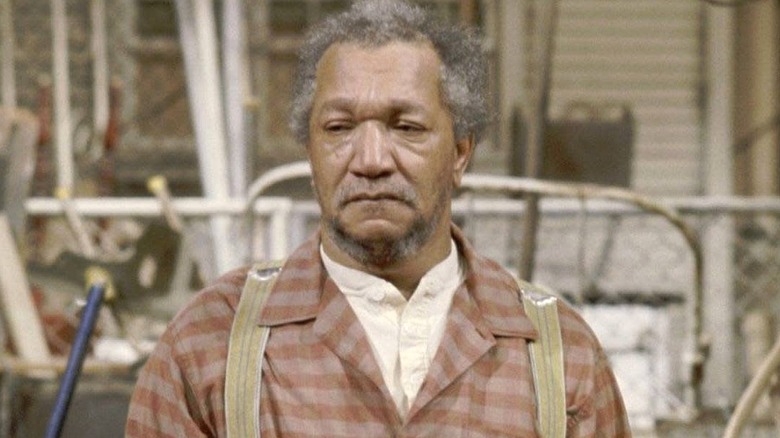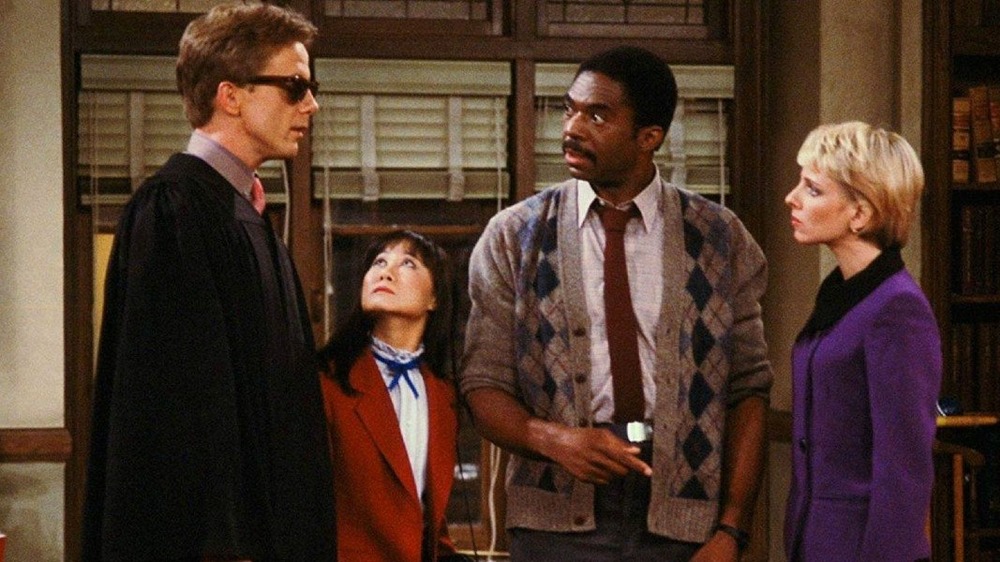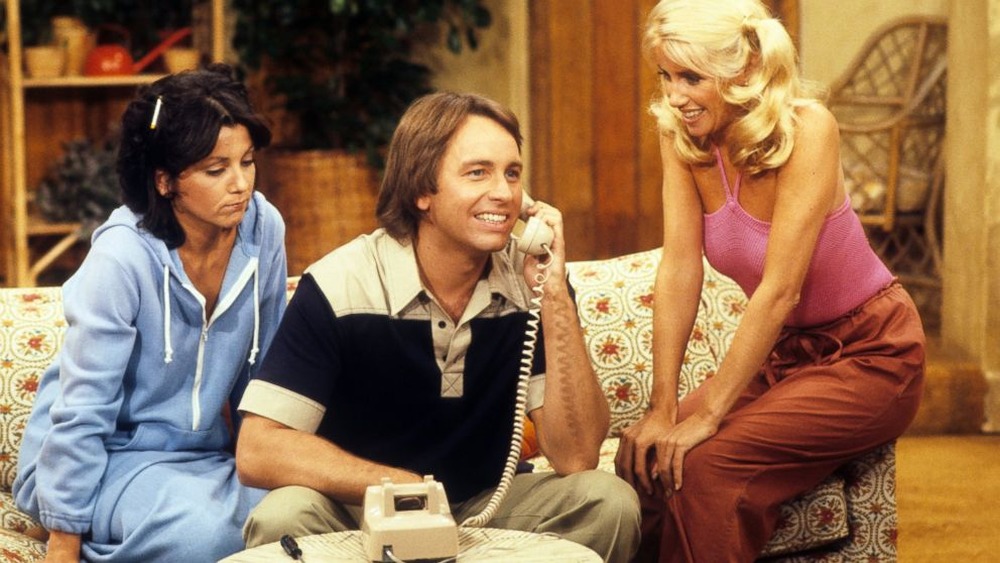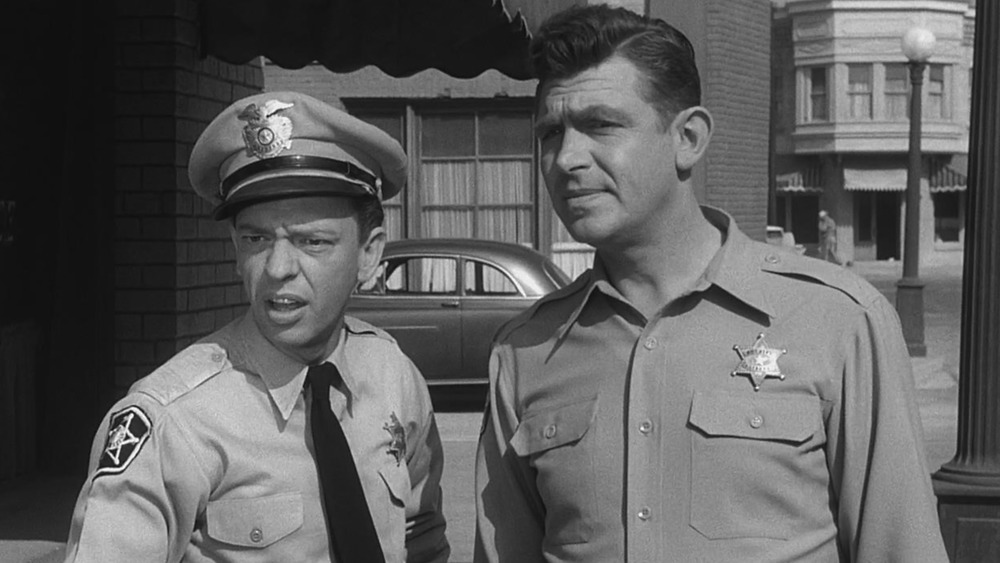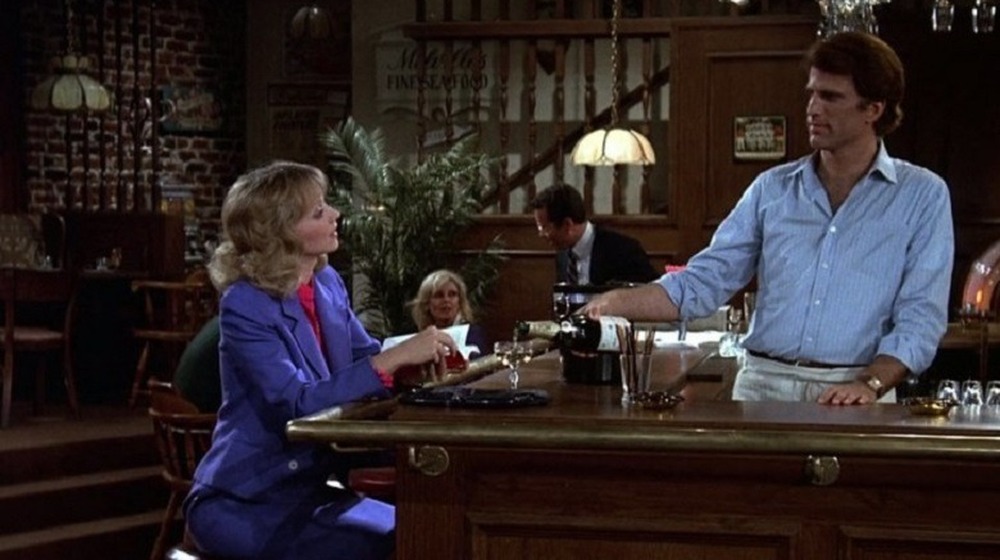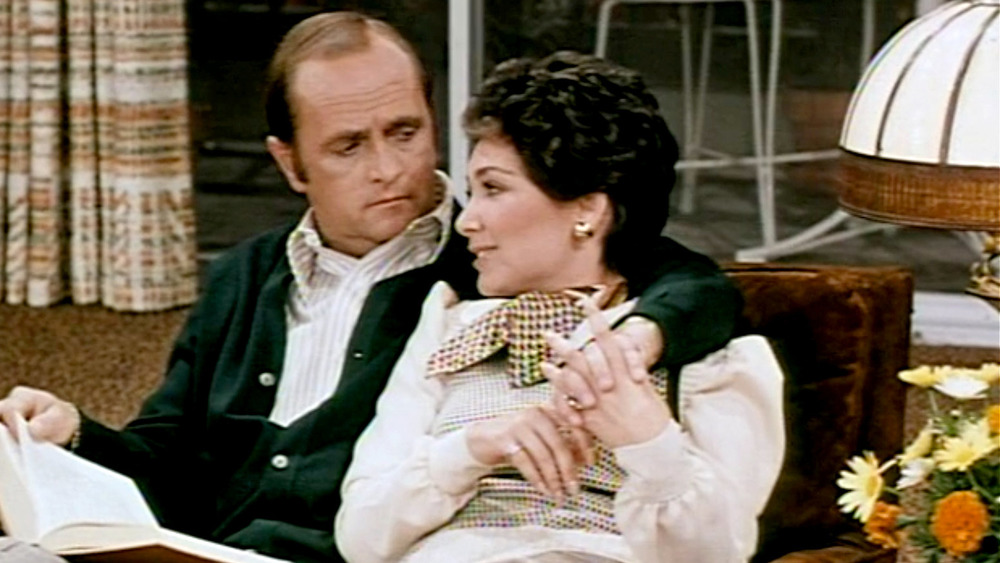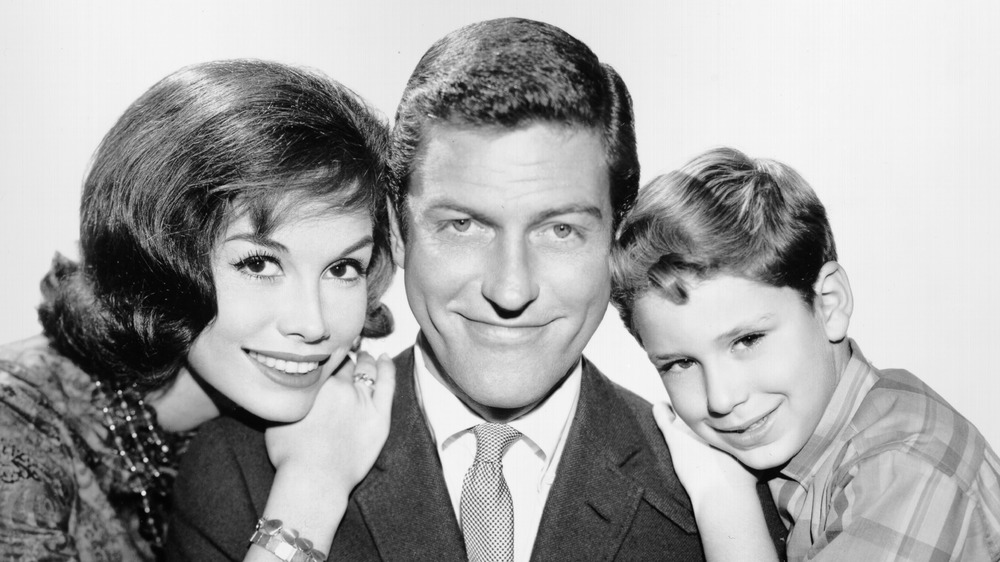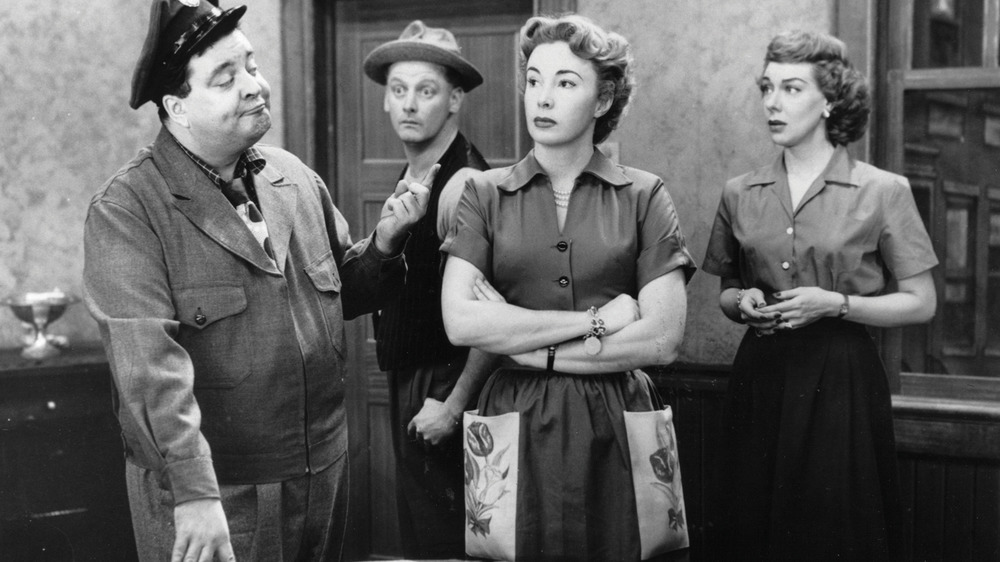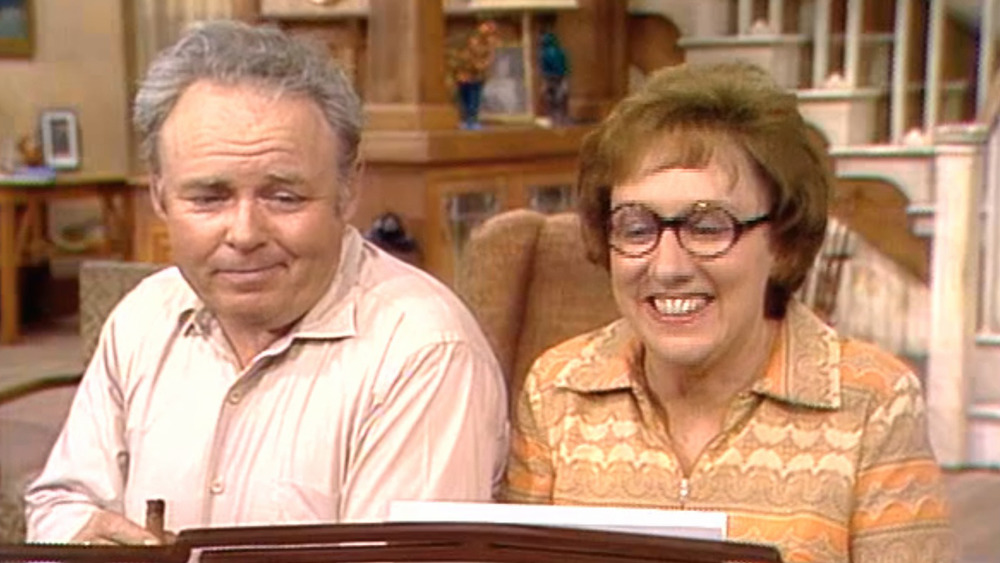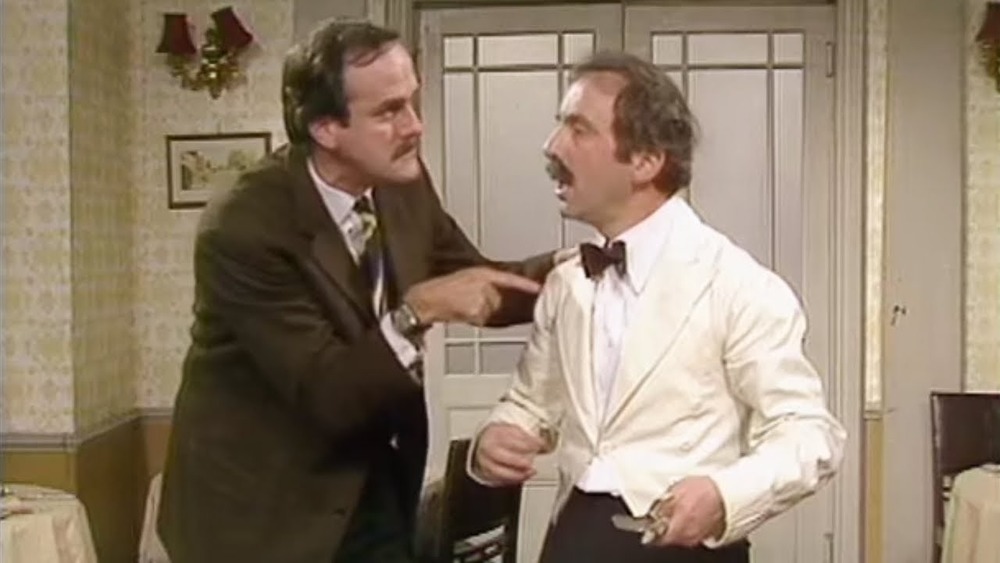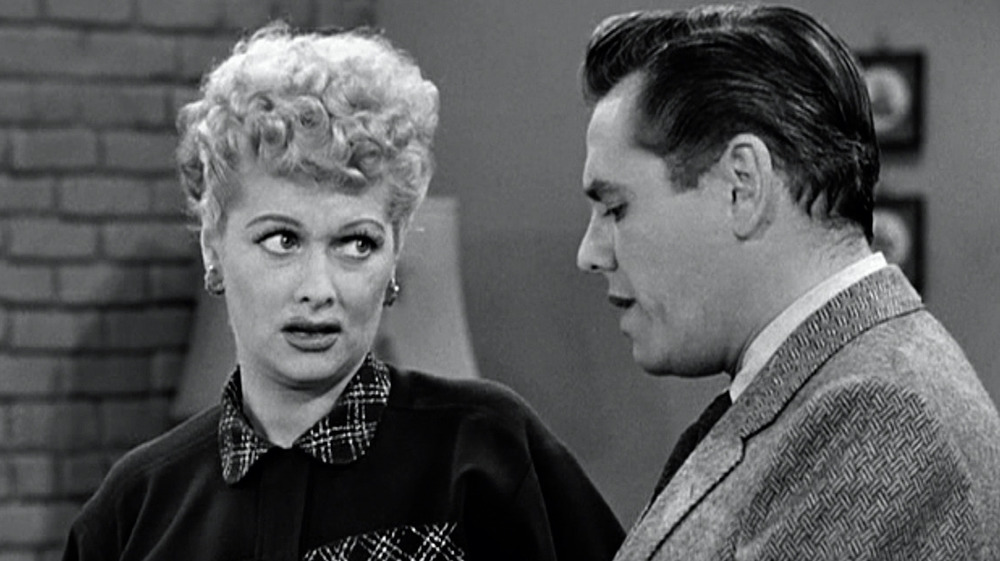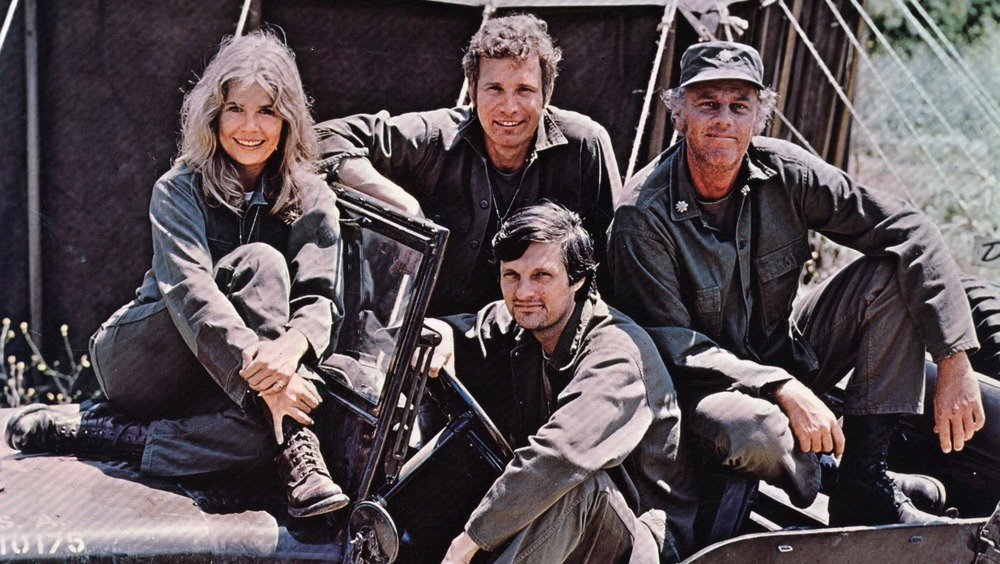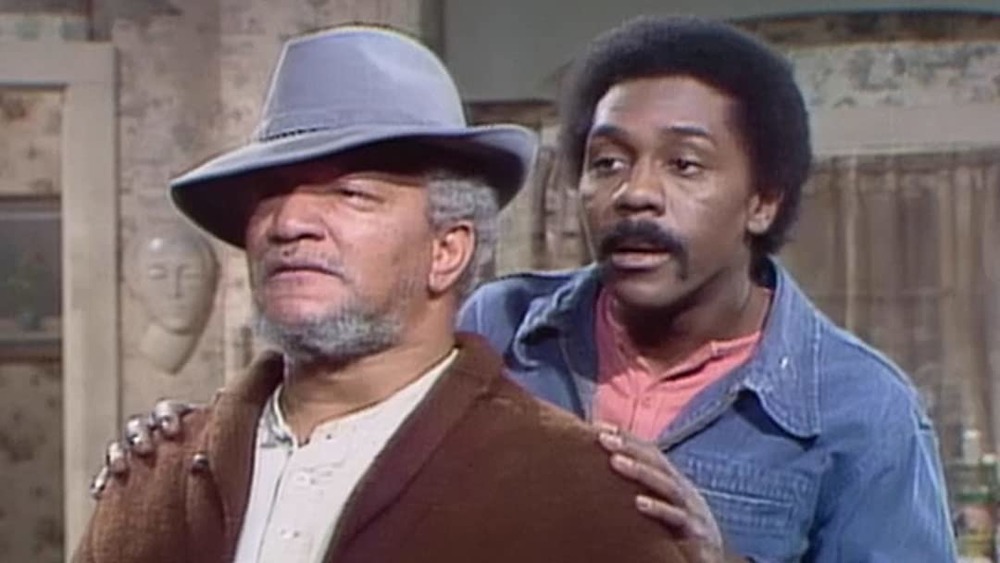Old-School Sitcoms That Still Hold Up Today
Like all forms of art, sitcoms have evolved with the times. They started with black and white, squeaky clean shows from the '50s (think still-charming programs like Leave it to Beaver or The Adventures of Ozzie and Harriet) that usually dealt with light family drama. From there, showrunners and writers started pushing boundaries. They played family dysfunction for bigger laughs, gave jokes more edge, introduced unlikeable characters, swapped living room comedy for workplace humor, and dove into more challenging themes like race, mental health, and politics.
Some shows fell short and haven't been talked about in decades. Others still hold up surprisingly well for a variety of reasons, even decades after going off the air. Why? Well, perhaps they laid the groundwork for current shows, or maybe they're just straight-up funny. Perhaps they're rich with perfectly executed nostalgia, or maybe they deal with painfully (and hilariously) relevant political squabbles. Whatever the reason, these old-school sitcoms are still worth watching.
Night Court had some unforgettable characters
Forgive the terrible word play, but there's no order in this court. Not with Harry Stone (Harry Anderson) running it, anyway. The baby faced 34-year-old — a fan of old movies and older music — was tapped for the night shift bench because the outgoing mayor decided to appoint some judges at the last minute, and Harry answered the phone that day.
It's a lucky break for him ... but not so much for the various bailiffs, prosecutors, and defendants who wind up in front of his gavel in the wee hours of the morning. To be fair to Stone, though, they're not all straight faces, either. Dan Fielding (John Larroquette), for example, is a romance-obsessed prosecutor, and bailiff Selma Hacker (Selma Diamond) is a chain smoker. Get it? Hacker?
Night Court may have a reputation for being a bit silly and lowbrow, but what can we say? Funny is funny, and the show holds up quite well. The critics didn't hate it, either. It won a respectable 7 Emmys out of 31 nominations. Not half bad for the night shift weirdos.
Three's Company has serious staying power
Jack Tripper (John Ritter) has been having a rough go of it when he meets Janet Wood (Joyce DeWitt) and Chrissy Snow (Suzanne Somers) at a Santa Monica party. They discover he's been sleeping at a local YMCA and invite him to live with them to replace their departing roommate. He accepts because he has no choice. Problem is, the building managers (the Ropers in the first three seasons and then Ralph Furley, played by Andy Griffith's Don Knotts, thereafter) won't tolerate co-ed living situations. Jack gets around this by pretending to be gay. That's the gist of Three's Company.
Most of the show's humor revolves around the running joke of Jack's supposed sexual orientation and the various schemes characters hatch up to get out of various situations. It's a bit outdated, but the show means well, and it's surprisingly funny today. Illustrating its staying power, it's been in syndication virtually ever since it went off the air in 1984. Currently it's on IFC, and they don't do that for just any old program.
The Andy Griffith Show proves nostalgia holds up
The Andy Griffith Show follows the adventures of a fictionalized version of its namesake, playing a small-town sheriff who doesn't carry a gun but is always armed with a smile. Along with the friendly lawman, there's his son, Opie (a young Ron Howard), Aunt Bee (Frances Bavier), and his well-meaning but goofy police deputy, Barney Fife (Don Knotts). Together, these fine folk all live in the happy hamlet of Mayberry, North Carolina, a place that's such an effective celebration of small-town Americana that it's almost become shorthand for it. In fact, even when it aired, the series pulled on nostalgic heartstrings.
"Well, though we never said it," the actual Andy Griffith explained on the The Today Show in 1996, "and though it was shot in the '60's, it had a feeling of the '30's. It was, when we were doing it, of a time gone by." It's not easy to make people nostalgic for a time they're actively living in, but that's precisely what Andy Griffith accomplished. Audiences rewarding the show by sending it out at the top of the Nielsen ratings, a feat only I Love Lucy and Seinfeld have managed to accomplish since. Yes, it's about as dated as you can get. But that's the whole point, and that doesn't mean it's not a great watch.
Cheers' dedication to regular folks makes it endlessly rewatchable
When you think of '80s music, you think Michael Jackson and Madonna. When you think of '80s movies, you think The Breakfast Club or The Goonies. When you think of '80s TV, you think Cheers. It's hard to imagine a series that dominated its decade more than this one, with its focus on the eponymous bar, the various waitstaff, and all the eccentrics who show up for a drink. It's not the most thought-provoking concept of all time, but its relatability and simplicity is exactly why it works. You can get endless stories out of it because the tales swapped by patrons and staff are exactly what keep bars like Cheers buzzing.
If the show were a bit more highbrow (like the hit '90s spinoff series, Frasier), maybe the 117 Emmy nominations and 28 wins would be its crowning achievement. But for a show about regular ol' folks who see the same ol' faces at the same ol' bars every night, we nominate the series' viewership as its highest honor. When it ended in 1993, an incredible 93 million people, roughly 40% of all Americans at the time, tuned in to see it off. So here's to you, Cheers, and all those classic reruns.
The Bob Newhart Show had the ultimate straight man
Robert Hartley (Bob Newhart), psychologist, is surrounded by nuts. No wonder he picked this field. There are his patients, eccentrics all. There are the other doctors in his building, split between friends and yet more eccentrics. There's his wife, Emily (Suzanne Pleshette), who's known to return fire when her husband deserves it. And together, they try to shoo away obnoxious next-door neighbor Howard Borden (Bill Daily). It's a mess, but life's a mess, and we're just trying to make sense of it. Besides, if it was any less of a mess, we wouldn't get to see Bob Newhart whip out his distinctive deadpan wit, and that just wouldn't do.
The show was critically acclaimed and one of the more popular shows of that decade. When it was finished, Bob Newhart went on to create another sitcom named after himself, Newhart. We only mention that so we can deliver this fact – The Bob Newhart Show was so good that, in one of the greatest TV endings of all time, Newhart concluded with the reveal that the events of the main character's life were all just one big dream that Robert Hartley was having. They tell writers that the "it was all a dream" shtick is played out. What they mean is, you can't beat Bob Newhart at it, so don't try. Instead, just check out both shows. You'll thank us later.
The Dick Van Dyke Show had unmatchable charm
Seriously asking, are there actually people in Hollywood history more effortlessly likeable than Dick Van Dyke and Mary Tyler Moore? We're not sure who they could possibly be.
As for The Dick Van Dyke Show, it's named after the actor, not the character. Van Dyke plays Rob Petrie, a charming comedy writer, and Mary Tyler Moore co-stars as his equally lovable wife, Laura. In each episode, Petrie has to juggle his hilarious home life (e.g., he thinks his baby was swapped at the hospital) with the complications of writing for a megalomaniacal comedian (played by the hysterical Carl Reiner). With a fantastic supporting cast that includes Morey Amsterdam, Rose Marie, and Richard Deacon, some of the characters on The Dick Van Dyke Show are based on real people in the TV business that Van Dyke and company knew well. This gave viewers a memorable, subtly self-deprecating look behind the curtains of Hollywood.
That's all well and good. But at the end of the day, it's Van Dyke and Moore that make the show such an endlessly rewatchable, warm, and dependably funny show. And much like Van Dyke's old-school, gangly tap-dancing chops, those are qualities that simply never go out of style.
The Honeymooners changed TV forever in less than a year
Perhaps no sitcom in history has had a bigger impact in as little time as Jackie Gleason's The Honeymooners, a show about the various get-rich-quick schemes that dim-witted Brooklyn bus driver Ralph Kamden (Gleason) cooks up with his buddy, Ed Norton (Art Carney), all while his wife Alice (Audrey Meadows) plays the voice of reason.
The show introduced timeless quotes to the pop culture lexicon. For example, Gleason's character would often growl, "One of these days, Alice." And whenever his goofy plans blew up in his face, he'd respond with a stammering "hamina, hamina, hamina." The show created the "bumbling, working class husband" archetype that became a sitcom staple (think Ray Barone, Homer Simpson, and Hal from Malcolm in the Middle. And it did all of that from October 1955 to September 1956.
Yes, you read that right. It aired for only 39 episodes in less than a year. To be fair, it did find a home as a recurring sketch on The Jackie Gleason Show, which ended in 1970, but the majority of its impact was established in the "classic 39." Problematic themes and domestic violence references aside, which we could all do without, there's no denying The Honeymooners is a hilarious, timeless triumph that's never been equaled.
All in the Family hits close to home
All in the Family, about curmudgeon Archie Bunker (Carroll O'Connor) and his family, was one of the first primetime programs to tackle issues like racism, homosexuality, reproductive rights, and problems in the bedroom. That alone would be enough to keep it relevant today. It also doesn't hurt that the show boasted an unforgettably funny supporting cast. Jean Stapleton plays Edith Bunker, Archie's ditsy but sweet wife, and Sally Struthers plays daughter Gloria, who takes her father's stubbornness and turns it into a feminist streak as she ages. Then there's Rob Reiner himself as "Meathead," Gloria's progressive husband, who lives in the house and constantly argues with Archie.
But the real reason it's still talked about is because of Archie himself. Millions of Americans have an Archie Bunker in their family or know someone who does. You know the type — a cable news addict with insensitive as a personality trait. It's someone who enjoys lashing out at political foes and is perpetually angry at a changing world they don't understand. And yet, at the end of the day, they're lovable nonetheless because they're family. That's not to excuse the bad behavior but to humanize it, which is precisely what the show sought to do.
A lesser actor in the lead role would've made the program unwatchable, but Carroll O'Connor turned it into one of the greatest, edgiest sitcoms ever, and one that was perhaps second only to M*A*S*H in terms of mid-'70s sitcom popularity.
John Cleese made Fawlty Towers a timeless classic
On paper, Fawlty Towers – a series about rude hotelier Basil Fawlty (John Cleese), his family and staff, and an endless parade of eccentric guests — seems like a rather old-school sitcom with some uncomfortably outdated ideas sprinkled in. There's a bossy wife, a disagreeable husband, a voice of reason in chambermaid Polly (Connie Booth), and a Spanish waiter (Andrew Sachs) who struggles with English. Nothing too revolutionary here.
On the screen, though, Fawlty Towers is a gut-busting masterpiece that manages to tap dance over contemporary PC laser beams, largely because John Cleese (of Monty Python fame) always turns the humor back on himself. The jokes both went there and never went too far. Some of the characters were almost offensive stereotypes, and they may well have been in the hands of someone other than Cleese and his cohorts, but everyone was simply too well-rounded and lovable here to hate on. It received lukewarm critical reception when it first came out, but the critics soon caught on to what audiences knew from the beginning — the show is timeless and hysterical. It's now considered one of the finest British shows of all time.
I Love Lucy was essential early TV
Quick, think of the 1950s. What comes to mind? If you didn't include I Love Lucy in the top three answers, probably alongside classic cars and sprawling, post-war suburbs, you're either lying or the question confused you. This show — about bumbling, lovable Lucy (Lucille Ball), her exasperated musician husband, Ricky (Desi Arnaz), and their neighbors, Fred and Ethel (William Frawley and Vivian Vance, respectively) — was enormously popular with audiences throughout the decade. It was fresh. It was hysterical. And Lucy was far too innocent and adorable for Ricky to give up on, even when she had to do more splainin' to do than usual.
It pushed boundaries, too. A dumb housewife and a strong, mature husband might seem like an outdated concept today, but showcasing a multiracial couple of any kind in the '50s was no laughing matter. Luckily for us, the show pulled it off and then some, as it was the most-viewed TV series for four of its original six seasons, thus establishing itself as a timeless staple of Americana decades after it went off the air. That's a heck of a legacy to leave behind, and honestly, the show is still hilarious today. The sight of Lucy eating chocolate off an assembly line and stuffing candy down her shirt because the conveyor belt is moving too fast for her to keep up never stops being funny.
M*A*S*H was an unmatched TV phenomenon
The 1970s weren't a fun time in the US. There was Watergate, a lousy economy, and The Star Wars Holiday Special. More than anything, though, the seemingly endless Vietnam War divided America almost as much as just about everything does now. Just imagine producing a show during this period ... a show that was centered around war.
Enter M*A*S*H ("Mobile Army Surgical Hospital"), a sitcom that followed Hawkeye (Alan Alda), Hot Lips (Loretta Swift), Klinger (Jamie Farr), and other Army surgeons during the Korean War. Simply put, the show didn't just survive in an era when the country was close to going to war with itself over, well, the war. It thrived, pulling in seemingly impossible viewership by acknowledging the darkness of combat and the impact on those who endure it, all without forgetting to be funny or going so far as to protest against the war. Treading that line so gracefully and so authentically allowed masses of people on both sides of the aisle to enjoy it.
Beyond that, though, it's simply a wonderful show. It's been pointed out plenty of times that it lasted far longer than the actual Korean War, but no one who's ever enjoyed the series would have it any other way.
Sanford and Son is more relevant than ever
Sanford and Son – a show about old, cantankerous bigot Fred Sanford (Redd Foxx) and his long-suffering son, Lamont (Demond Wilson) — was filled with hilarious and groundbreaking racial humor. It was also revolutionary, knocking The Brady Bunch off the air in 1974 and paving the way towards countless African-American sitcoms that followed it. Like other shows of the era, there was a fantastic supporting cast, too, and many episodes involved harebrained schemes that the two lead characters hatched and begrudgingly cooperated on to pay off their various debts.
Above all else, though, it was so honest in its depiction of family members with incompatible worldviews struggling to stay together that it just might be more relevant today than half of what's currently on TV. Millions of younger Americans can identify with Lamont's endless, sometimes pointless struggle to broaden his small-minded father's horizons, and just as many older folks can sympathize with Fred's irritation at being endlessly preached at. Above all else, we can all relate to the tireless struggle to reconcile our politics with our relationships. It's work to love people who have so little in common with us. But it's usually worth it.
